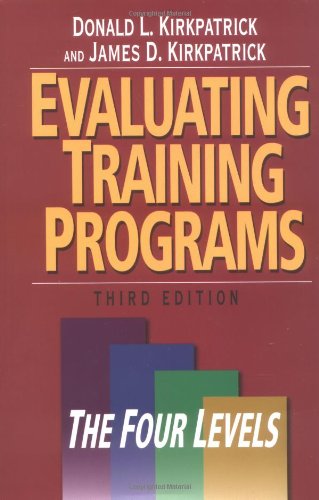Evaluating Training Programs: The Four Levels epub
Par savage julio le vendredi, avril 15 2016, 07:32 - Lien permanent
Evaluating Training Programs: The Four Levels by Donald L Kirkpatrick


Download eBook
Evaluating Training Programs: The Four Levels Donald L Kirkpatrick ebook
Page: 399
Publisher: Berrett-Koehler Publishers
ISBN: 1576753484,
Format: pdf
Donald Kirkpatrick's 1994 book 'Evaluating Training Programs' defined four levels of evaluation that he found necessary in determining the value and worth of training programs. Training show improvement in efficiencies, productivity, profits, costs, reduced turnover? Level 5: ROI: Did the training programme show a positive ROI? For one thing, the taxonomy invites evaluating everything after the fact, focusing too heavily on end results while gathering little data that will help inform training program improvement efforts. Classification of different type of measures abound. (Discovering after training that customer service complaints it the training field has perhaps put the cart before the horse. Case Study: How XYZ law firm used Phillips ROI Methodology to evaluate the efficiency and effectiveness of their project management training programmes. By far the biggest traction for evaluation has been in evaluating training programs (Jack Philips' ROI work and Kirkpatrick's four levels training evaluation model come to mind). He advises working backwards through his four levels more as a design, rather than an evaluation, strategy; that is: What business results are you after? The case study example below will follow the Phillips ROI Methodology™ and encompass the four major phases of the methodology: Evaluation Planning. Evaluating fellowship programmes. Self-efficacy is an important outcome from any training program as it reflects participants' ability to translate acquired skills into day-to-day clinical practice [36,54].